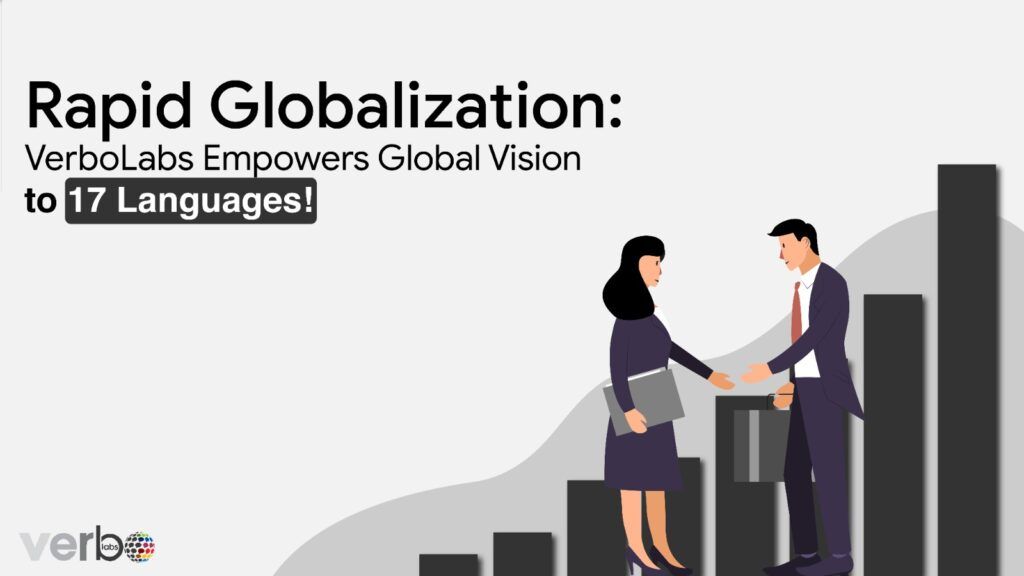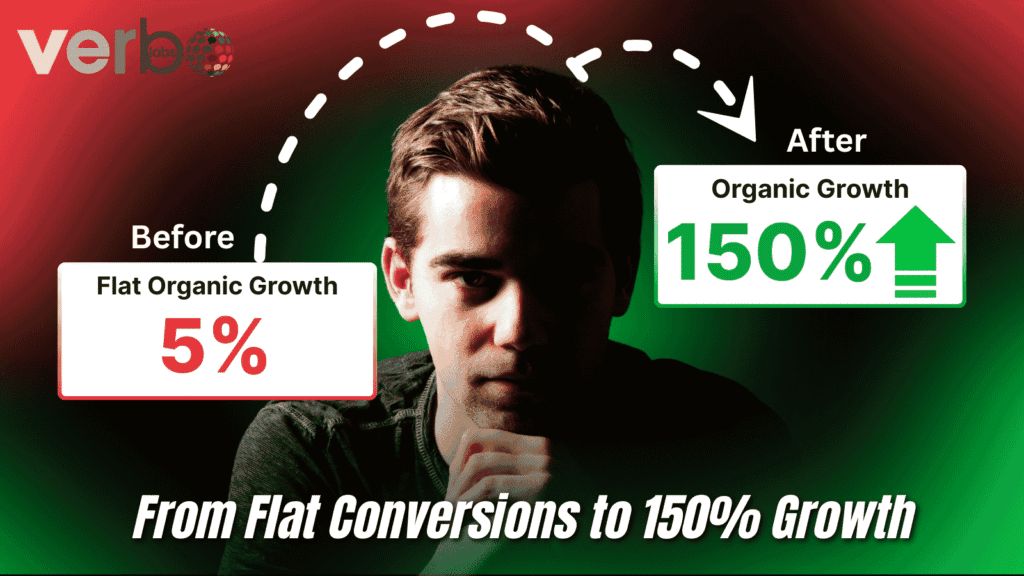
Service: Website localization + Multilingual SEO + Content creation
Client: (A fast‑growing SaaS company)
Agency: VerboLabs
Date: (Project completed Q2 2025)
Client Overview
The client is an enterprise‑focused SaaS company offering analytics and collaborative productivity tools. After gaining strong traction in English‑speaking markets, the brand sought to expand into Europe and East Asia. The core objective was to increase inbound leads and improve customer acquisition efficiency in non‑English geographies.
To achieve this, they partnered with VerboLabs’ localization services to adapt their website content and SEO strategy for multiple languages and regions.
The Challenge
- The website was English‑only and poorly visible in non‑English search queries across target markets.
- User engagement among international visitors was weak: High bounce rates, short session durations, and low form fills.
- There was no regional keyword strategy, no href-lang implementation (a tag that tells search engines which language or regional version of a webpage to show to users), and no content targeted at local search intent.
In simpler words, the website didn’t guide search engines to display the right language version to users in different regions, leading to poor visibility in local searches. - Competitors were achieving greater visibility in local markets through native‑language optimization and acting on local insights.
The Solution by VerboLabs

VerboLabs developed a strategic, multi-phase implementation plan leveraging their content writing services alongside localisation expertise to address the challenge:
Phase 1 – Market & Keyword Research (2 weeks)
- Conducted dedicated keyword research for six target languages: French, Spanish, German, Japanese, Korean, and Portuguese.
- Identified high‑volume, lower‑competition long‑tail terms in each market, aligned with the client’s service offering and buyer intent.
- Mapped local search behaviour and competitive gaps.
Phase 2 – Content localization & Creation (4–6 weeks)
- Localized 20 priority landing pages (product, pricing, features) plus 15 blog posts. Rather than direct translation, content was rewritten by native writers to reflect local intent and tone.
- For each target market, the meta titles, meta descriptions, H1 tags, alt‑text, and internal linking were adapted to local search patterns.
- Created additional region‑specific blog content aimed at local long‑tail keywords to support inbound traffic and authority.
Phase 3 – Technical Multilingual SEO (1–2 weeks)
- Implemented hreflang tags and language sitemaps to help search engines serve the correct language version to users.
- Designed localized URL structures (e.g., /fr/, /es/) and updated site architecture to support multiple languages.
- Equipped with tracking in Google Analytics and Google Search Console to measure performance by language region.
Phase 4 – QA & Local Testing (Ongoing from rollout)
- Native reviewers in each target region validated tone, cultural relevance, and accuracy of calls‑to‑action.
- User experience reviews ensured consistency of brand voice and navigation across languages.
- Performance was tracked and adjusted periodically to refine keyword rankings and content engagement.
The full rollout—from kickoff to first live market—was completed in 6 weeks; all six languages were live within 10 weeks.
Results & Impact

Over the first 3 months following full roll‑out, the client saw measurable growth across key KPIs:
- +60% increase in organic traffic from non‑English target markets compared to the prior 3‑month period.
- +25% growth in qualified inbound leads originating from localised landing pages and blog content.
- −15% reduction in bounce rate on localized pages, demonstrating improved user relevance and engagement.
- +40% increase in average session duration on non‑English pages.
- Time‑to‑market: 6 weeks for initial 3 languages; full 6‑language rollout completed in 10 weeks.
These improvements translated into a stronger global pipeline, improved conversion efficiency in new markets, and a faster return on localization investment.
Key Takeaways
- Native‑language SEO is essential. Local users prefer their native language, and content optimised for regional search intent delivers significantly higher engagement.
- Technical localization matters. Technical localization is essential. Proper setup — including tags that tell search engines which language or region a page targets, a clear URL structure, and language-specific sitemaps — ensures the right content appears to the right audience and avoids duplication.
- Integrated approach wins. Combining translation/localization, content creation, and SEO delivers more impact than treating each separately.
- Cultural adaptation beats literal translation. Content that reads like a native piece builds trust, reduces bounce rate, and improves conversions.
- Fast execution underpins success. A rapid rollout helps capitalise on seasonal or market‑entry momentum, before competitors consolidate.
Conclusion
By partnering with VerboLabs, the SaaS company transformed from an English‑only site into a truly global, multilingual growth engine. The project delivered double‑digit traffic growth, stronger engagement, and meaningful lead generation in new markets—proving that localization coupled with SEO can drive business outcomes, not just translations.
Ready to expand your global footprint?
Partner with VerboLabs to localise your website, optimise for multilingual organic search, and unlock growth in new markets.
Contact VerboLabs today →

Expand your global reach—partner with VerboLabs for multilingual SEO and website localization today!



